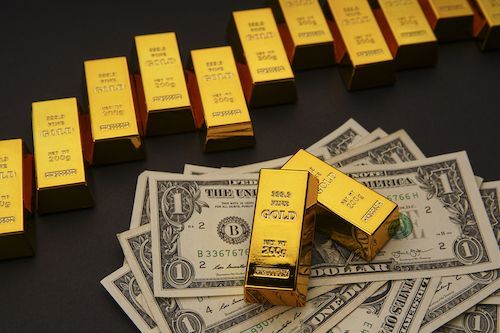

Buying Opportunity for Gold After CPI Release
The June Consumer Price Index (CPI) reading was announced on Wednesday at a disturbingly above expectation 9.1% year on year, closely followed by a Producer Price Index (PPI) figure of 11.3%. These indicated not only the anticipated poor figures on price rises in fuel and energy costs – something of a global phenomenon and largely outside Fed control - but also rises in many other domestic categories too, although the detail in the statistics did suggest a slight easing of some key elements. The conclusion therefore has to be that even the Fed’s apparently more aggressive tightening and interest rate raising program is so far having little effect in bringing inflation pressures down. Indeed the consensus has now moved towards the Fed at least maintaining its more aggressive stance on interest rate rises at the next FOMC meeting due at the end of the current month on July 26th and 27th.
Immediately after the June FOMC meeting Fed chair Jerome Powell indicated that even a repeat of the seemingly highly aggressive 75 basis point increase in the Federal Funds rate was unlikely to be repeated at the July meeting. Markets breathed a sigh of relief and even picked up a little on this assumption. But now, only a few weeks later, the Chicago Mercantile Exchange (CME)’s Fedwatch Tool almost immediately predicted an 83.3% chance of a full 100 basis point increase following the latest CPI data shock and Thursday’s 1% rate rise by the Canadian central bank. Things are moving faster than even we had anticipated. However the Fedwatch tool is proving pretty volatile in its calculations and expectations have since eased considerably with it only suggesting around a 31% chance of a 1% rate rise now apparently being considered as most likely by this morning, although a 75 basis point rise is still considered the most likely outcome.
However, even two successive rate rises of the 75 basis point magnitude may well be considered excessive. If the Fed does prove to be this, or perhaps even more, aggressive the effect on markets could be very significant given the initial reaction to rumors of only a 50 basis point rise only a couple of months ago.
The U.S. economy is almost certainly already in technical recession as defined by two successive quarters of negative growth, and the economy does not yet seem to be showing any real signs of improvement. It only looks to be a matter of time before employment statistics start to decline as well and perhaps the general public will get shaken out of its continuing sense of complacency. The question may well be how deep the recession will ultimately become, and for how long the downturn will last. This will almost certainly impact the results of the midterm elections late in the year, not that the Republicans would have fared any better, but timing is often of the essence when it comes to political ascendancy.
Elon Musk has already given his verdict that the U.S. economy is indeed in recession, and is likely to remain therein for the next year or so. A similar conclusion has been reached by the Atlanta Fed which is probably a more reliable source of such information, and whose data is that on which the full Federal Reserve is said to base its decisions. The big question is thus how aggressive will the Fed be? Unless there are some other indicators that inflation may at least be peaking then the higher interest rate hike level may still be on the cards at the late-July meeting.
Equities, metals and bitcoin are all periodically weakening at the moment, although all have seen a little strength in the past couple of trading days – but things can move rapidly in this financial environment. Even copper which is a traditional pointer to general economic health has slipped in price substantially in recent weeks. Gold too, which is normally considered a safe haven and wealth protector, is trading near its lowest levels for two years and at one time had even fallen below $1,700 spot, although its decline in percentage terms has not been nearly as great as most other relevant asset classes year to date.
Gold’s fall has been blamed largely on the strength of the dollar index which has mostly been continuing to rise – a strong dollar tends to correlate to a weaker gold price in dollar terms. But one should also recognize that the rising dollar index is not because of a stronger U.S. economy, but because of an even weaker performance of economies elsewhere. In other words gold’s decline in dollar terms has not necessarily been mirrored in other key global currencies. For example the U.S. dollar has just about achieved parity with the euro in recent days, which represents a huge fall in the latter and a consequent less severe drop in the price of gold in euro terms.
Further dollar strength could continue to be adverse news for the gold price short term, although long term the dollar still appears to be in a downtrend in terms of purchasing power which should be positive for gold over time. The question for gold followers is, of course, how long will it take for this long term trend to assert itself and take effect.
Overall, history tells us equities will eventually pull out of their recessionary price malaise and there will be good gains to be made, but there may well be further heavy losses made before markets start to turn upwards again. The same will probably be true of bitcoin. It all depends how steep and prolonged the recession turns out to be.
Stay clear of risk-on assets for the time being. Occasional short term recoveries are likely to end in rapid steep reversals as and when new adversely perceived data is released. We could easily see further falls of up to 30% in equities, and perhaps 50% in bitcoin, on particularly poor data over the next eighteen months before recoveries start to kick in. Maybe that’s a worst case scenario, but best be prepared.





